A look at the Jets' projected starters, according to the team's website.
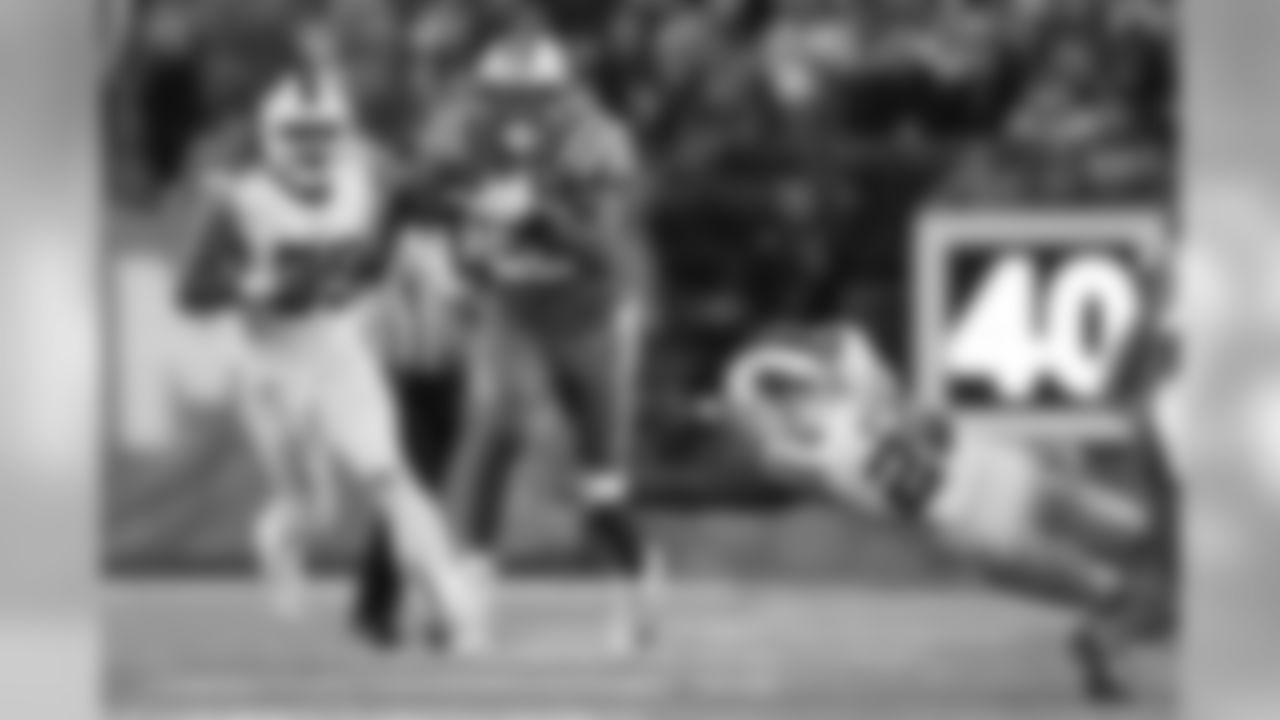
RB Matt Forte

RB Bilal Powell

QB Josh McCown

WR Jermaine Kearse

WR Robby Anderson

TE Austin Seferian-Jenkins

C Wesley Johnson

OT Kelvin Beachum

G James Carpenter

G Brian Winters
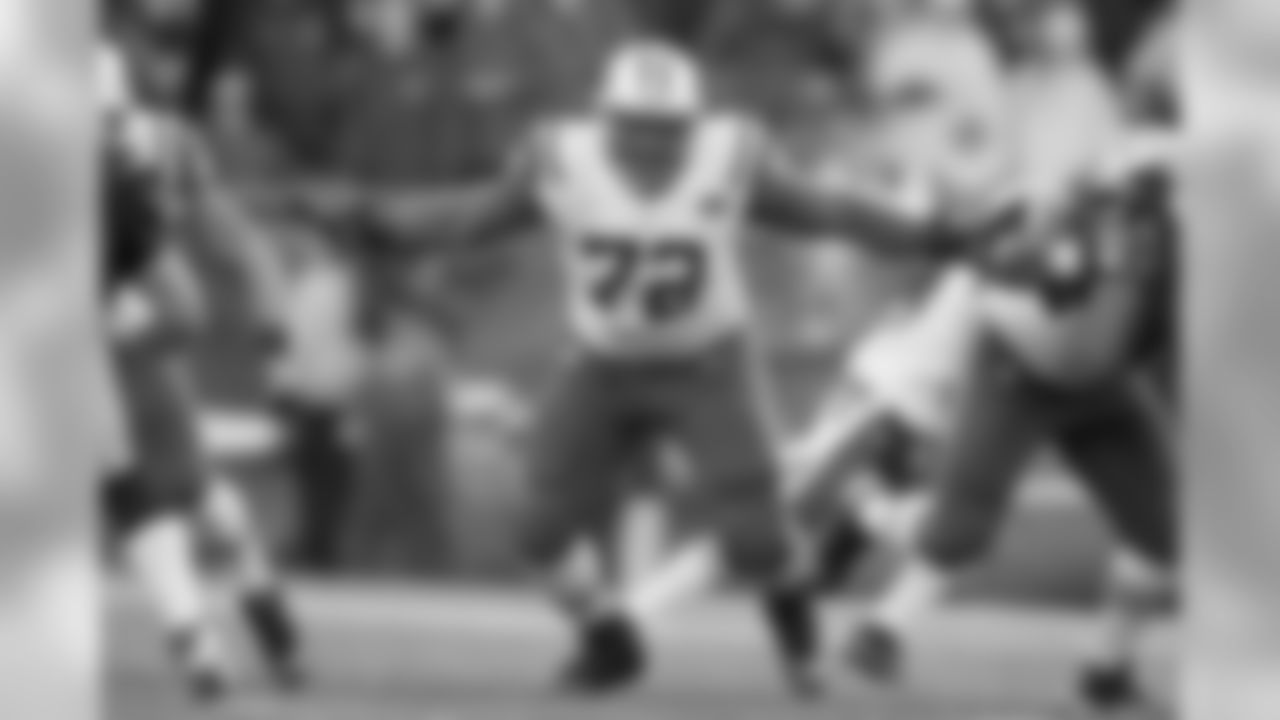
OT Brandon Shell
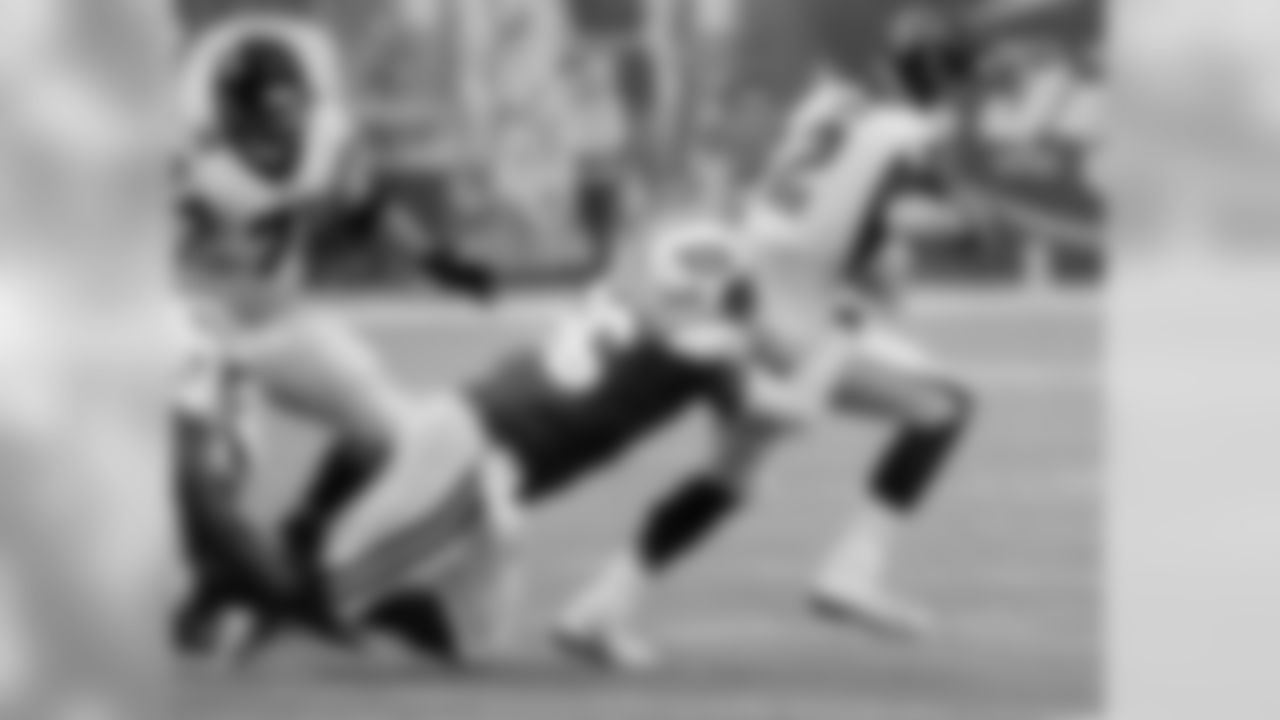
DE Muhammad Wilkerson

DE Leonard Williams

DT Steve McLendon
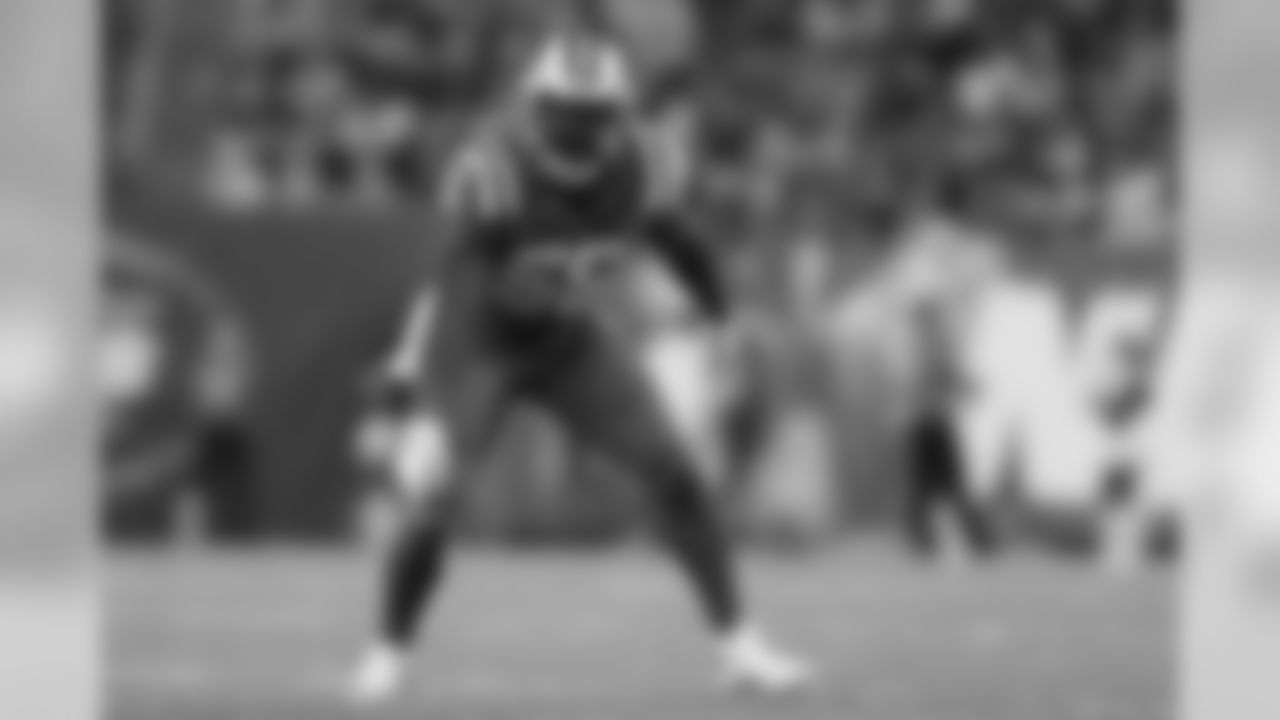
LB Demario Davis
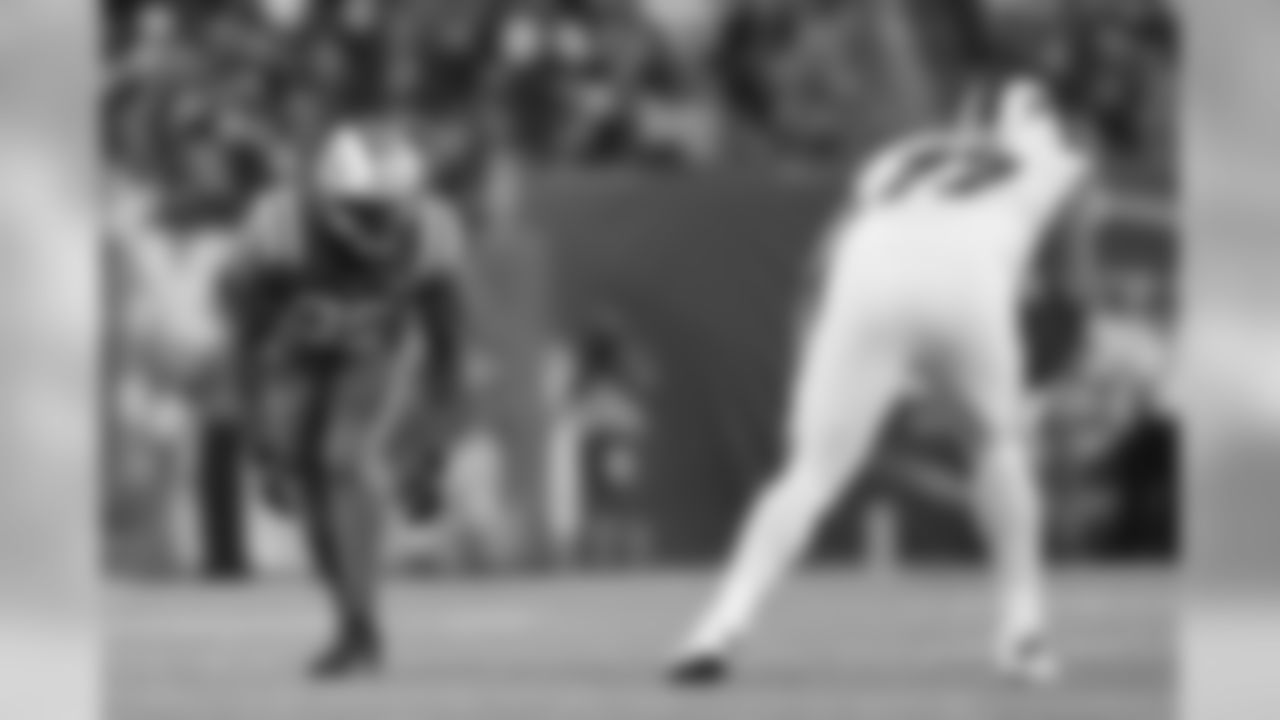
LB Josh Martin
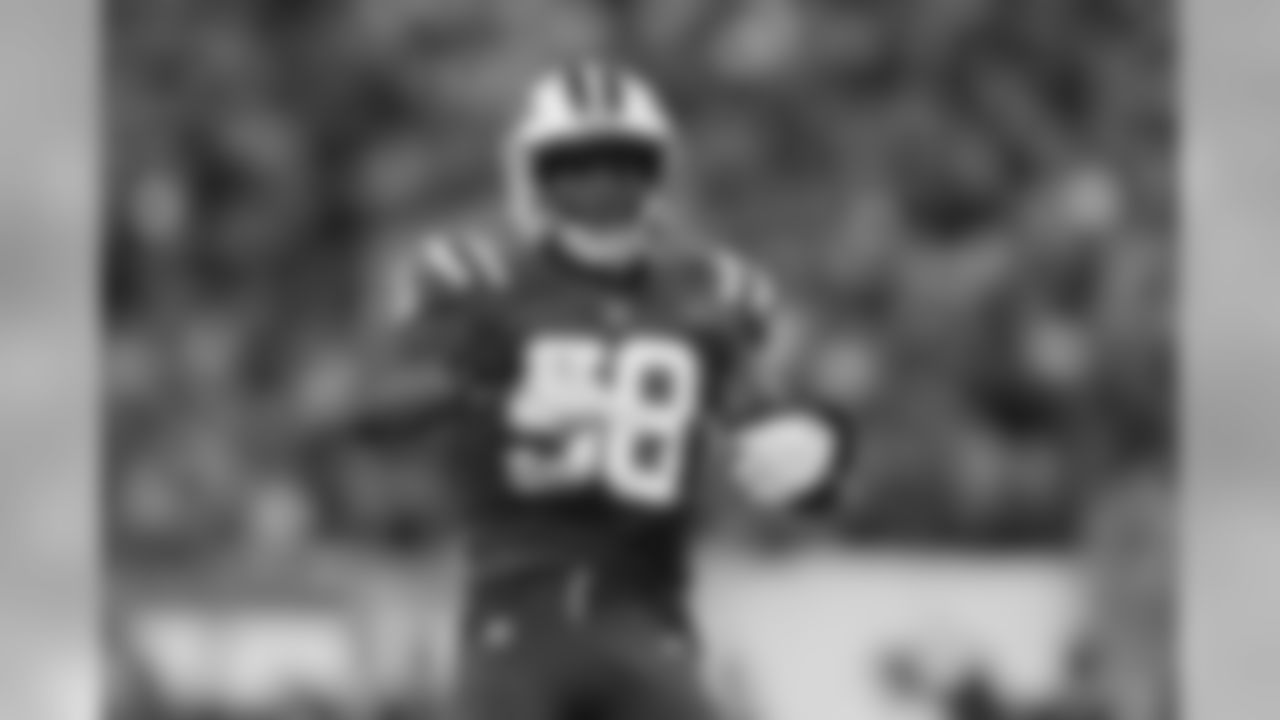
LB Darron Lee

LB Jordan Jenkins

S Jamal Adams

S Marcus Maye

CB Morris Claiborne
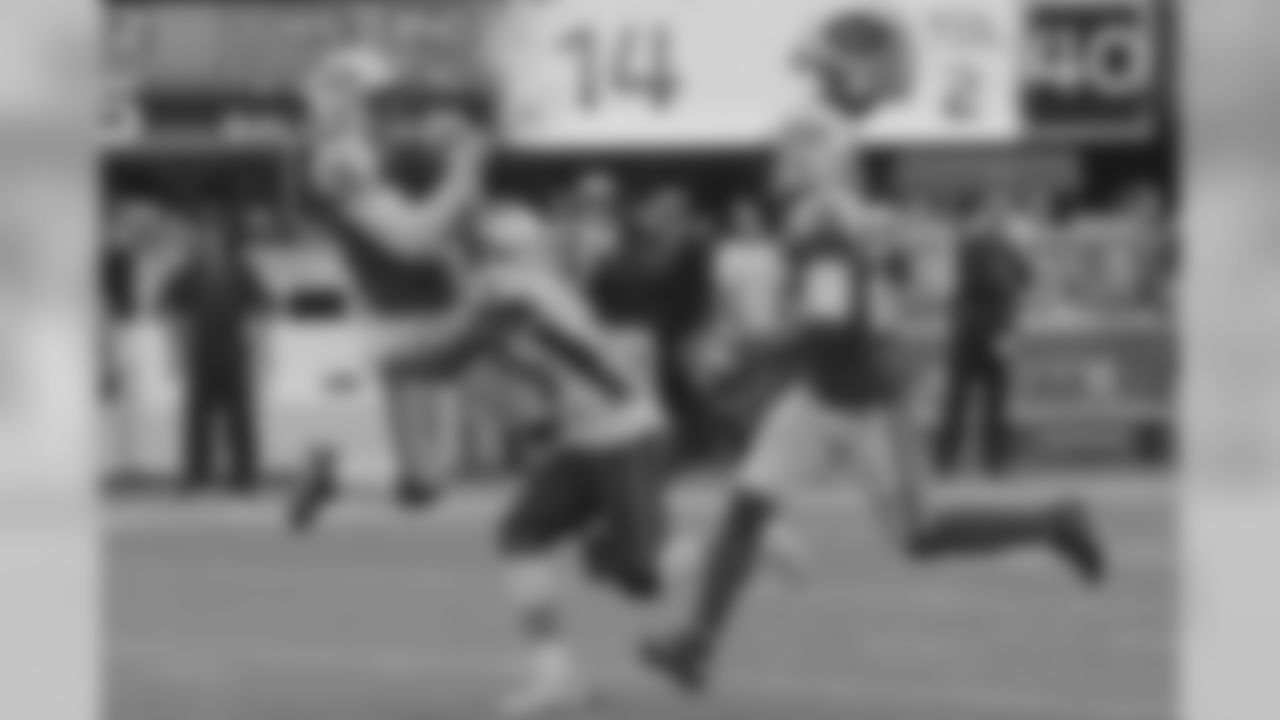
CB Buster Skrine

K Chandler Catanzaro

P Lac Edwards
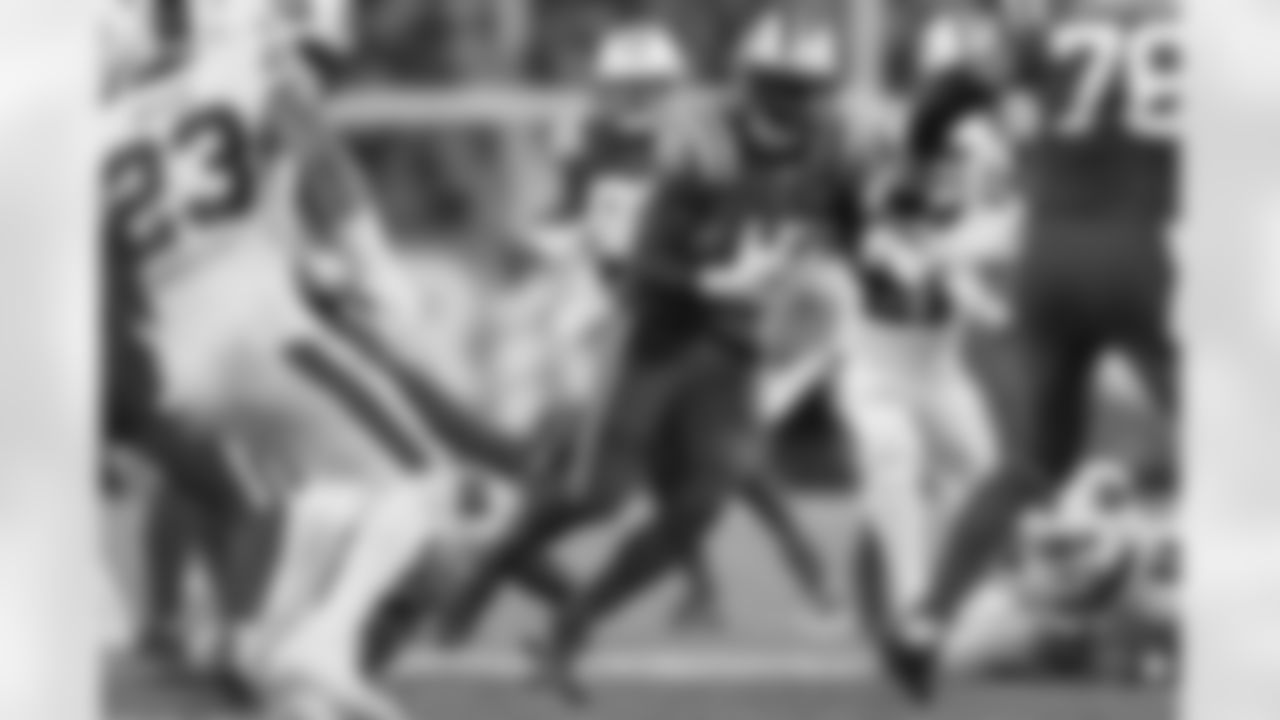
PR Elijah McGuire
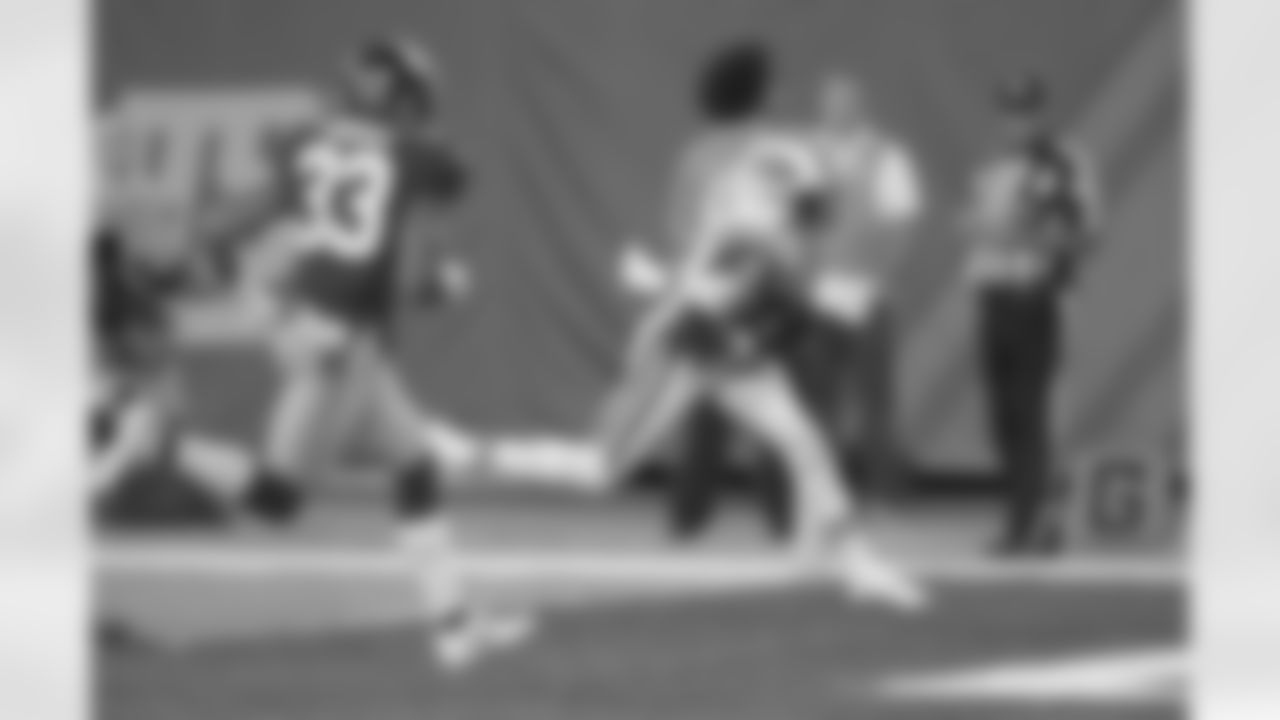
KR ArDarius Stewart

LS Thomas Hennessy
On Sunday, the 2-6 Tampa Bay Buccaneers will play the first of two consecutive games against AFC East opponents, taking on the 4-5 New York Jets. It will be the 12th meeting between the two in a series that has been lopsided in the win-loss columns (more on that series history). The Jets snapped a three-game losing streak last Sunday by downing the Buffalo Bills and have a chance to get to .500 before enjoying their well-deserved bye week.
The Buccaneers, meanwhile, are trying to end their own five-game skid and get the second half of the season started on a good note. To do so, they will need to work on limiting quarterback Josh McCown's high completion rate and keep a three-headed backfield in check. Tampa Bay's offense will work to slow down a pass rush that produced seven sacks last week in a win over Buffalo. Here's a closer look at the challenges the Buccaneers will face on Sunday when they welcome the Jets to Raymond James Stadium.
HEAD COACH

In 2014, Todd Bowles was selected by the Associated Press as the NFL's Assistant Coach of the Year. Not surprisingly, Bowles was running his own team by the next season.
Bowles became the 16th full-time head coach in Jets history when he took the job on January 14, 2005. In introducing Bowles, Jets Owner Woody Johnson referred to him as a "a hard-working and dedicated leader" who garners respect of players and fellow coaches because of that approach. Bowles, a New Jersey native, was also described as a "quiet, serious worker."
Bowles' resiliency and determination were evident in his NFL playing career. An undrafted safety out of Temple, he signed with Washington and made the team, emerging as a starter by the start of his second season. That was 1987, and at the end of that campaign Bowles earned a Super Bowl championship ring, starting at free safety for a Washington team that defeated Denver, 42-10, in Super Bowl XXII. Bowles would go on to play seven seasons in Washington, interrupted by one year (1991) spent with the San Francisco 49ers.
Bowles first got into coaching on the collegiate level, at Morehouse College in 1997, but his first NFL job was with the team for which he now occupies the corner office. The Jets brought him on as a secondary coach under Al Groh in 2000, though Groh's tenure would last just one year, causing Bowles to move on to the Browns in 2001. After four seasons in Cleveland and three in Dallas, all coaching defensive backs in some capacity, Bowles was hired by the Dolphins in 2008 as the secondary coach and assistant head coach under new Head Coach Tony Sparano. His four-year run in Miami actually concluded with his first taste of the head coaching job, as he replaced Sparano as the interim coach for the final three games of 2011. Miami, which was 4-9 at the time of Sparano's firing, finished 2-1 under Bowles.
Bowles went next to Philadelphia in 2012, starting as the secondary coach but getting a midseason bump to defensive coordinator after the Eagles parted ways with Juan Castillo. That helped him get his first full-time coordinator position in Arizona, as did the presence of Head Coach Bruce Arians, who had coached Bowles at Temple many years earlier. Bowles made an immediate impact in Arizona, as the Cardinals' defense in 2013 finished sixth in yards allowed and seventh in points allowed, up from 12th and 17th the year before. Arizona had the NFL's number-one ranked run defense that season while also ranking sixth in takeaways and fifth in interceptions. Arizona had the NFL's fifth-ranked scoring defense in 2014, Bowles' last with the Cardinals before he was hired by the Jets.
OFFENSE

Despite a significant amount of turnover between the 2016 and 2017 seasons, New York's offense is outperforming expectations, averaging 310.4 yards and 21.2 points per game. While those numbers rank close to the middle of the NFL pack, they are relatively impressive given that the Jets released such key players as center Nick Mangold and wide receivers Eric Decker and Brandon Marshall and replaced one veteran quarterback (Ryan Fitzpatrick) with another (Josh McCown).
McCown is enjoying his best run since a five-game stint in relief of Jay Cutler in Chicago in 2013 and could start every game in a season for the first time in his 15-year NFL career. His passer rating of 96.1 this season is his best in any campaign in which he's made more than five starts, and his completion percentage of 70.4 is only exceeded this season by Drew Brees and Alex Smith. McCown has been sacked 26 times already this year, but he has avoided the injuries that plagued his two years in Cleveland. He also happens to lead the Jets with three rushing touchdowns and he's always been a fearless scrambler.
McCown really spreads the ball around in New York's offense. Six different players have at least 18 receptions, including two running backs (Matt Forte and Bilal Powell), three receivers (Robby Anderson, Jevon Kearse and Jeremy Kerley) and one tight end (Austin Seferian-Jenkins). Seferian-Jenkins leads the team with 33 receptions but has a low 6.7 yards-per-catch average to go with that; it's Anderson, a very fast wideout in his second season, who provides the big plays with his team-leading 483 yards and 15.6 yards-per-catch average. The Jets will be without one of those six weapons against Tampa Bay, as Kerley was suspended by the NFL earlier in the week.
McCown has been good under pressure this season, as well. His passer rating in blitz situations actually goes up to 99.7, and he has a 116.7 rating when the ball moves inside the opponent's 30-yard line. The Jets are also tied for 10th in the NFL with 28 completions of 20 or more yards, and Jets receivers have helped McCown with the third-lowest drop rate in the league.
Pictures from the Buccaneers' practice on Wednesday.

CB Vernon Hargreaves

DE Patrick Gamble

LB Adarius Glanton

LB Kendell Beckwith

LB Kwon Alexander

LB Devante Bond and LB Eric Nzeocha

LB Adarius Glanton, LB Lavonte David and LB Riley Bullough
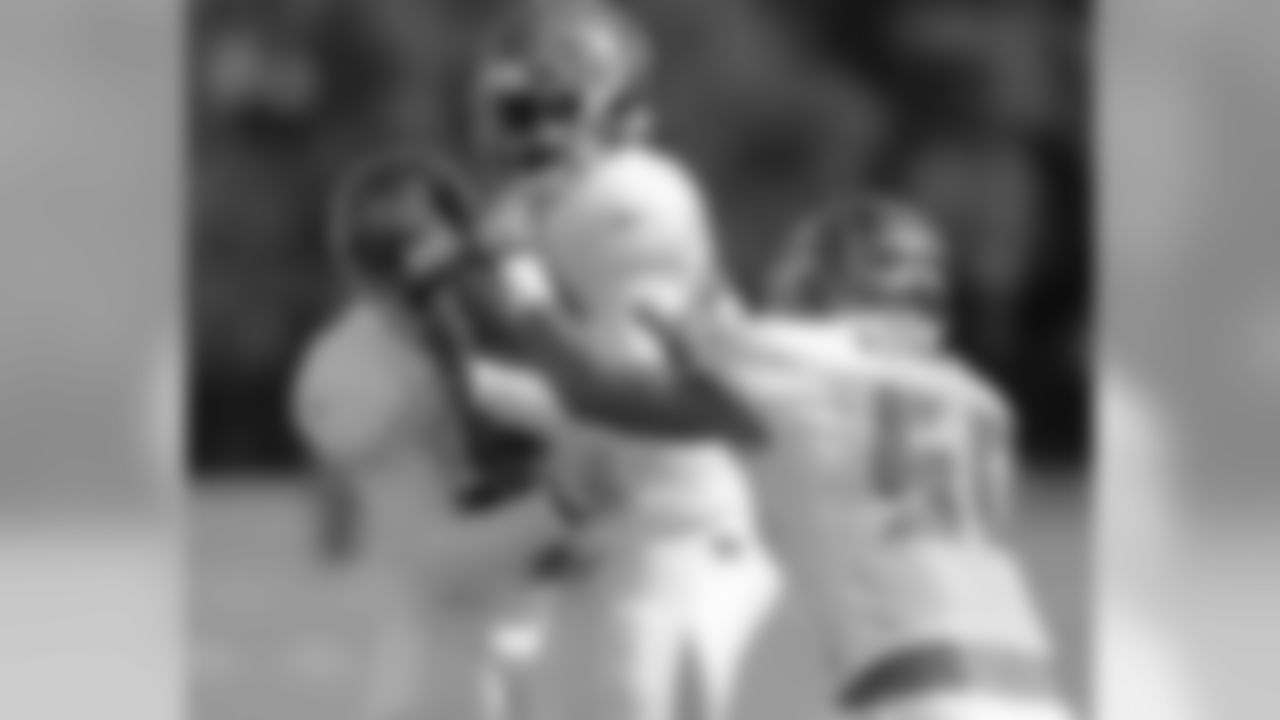
LB Kwon Alexander and LB Eric Nzeocha

Bucs practice

TE Antony Auclair

RB Doug Martin
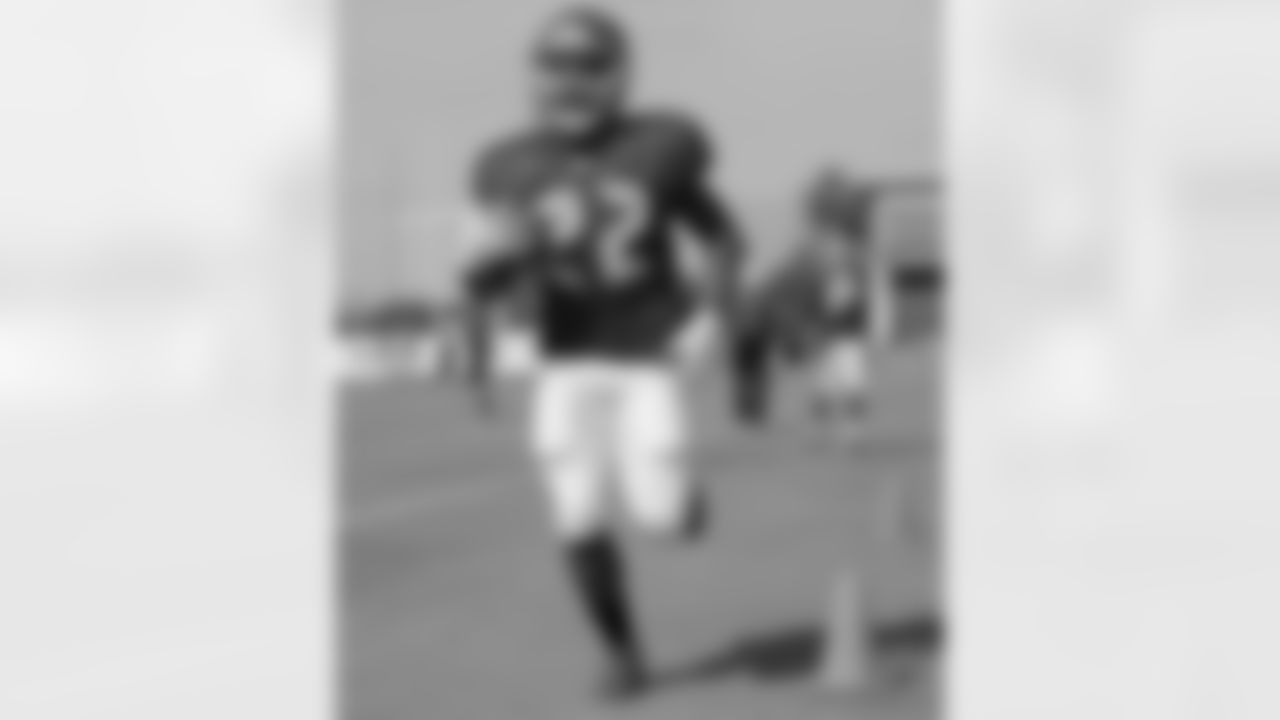
RB Doug Martin

RB Jacquizz Rodgers
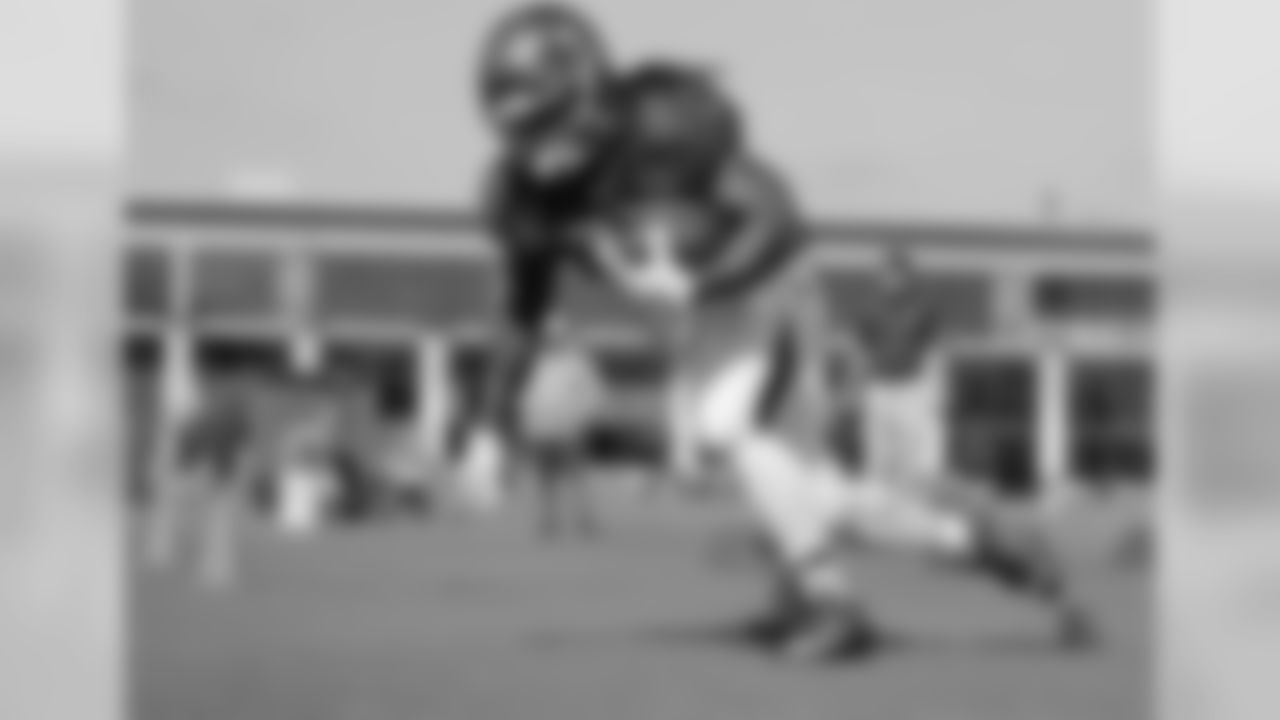
RB Jacquizz Rodgers
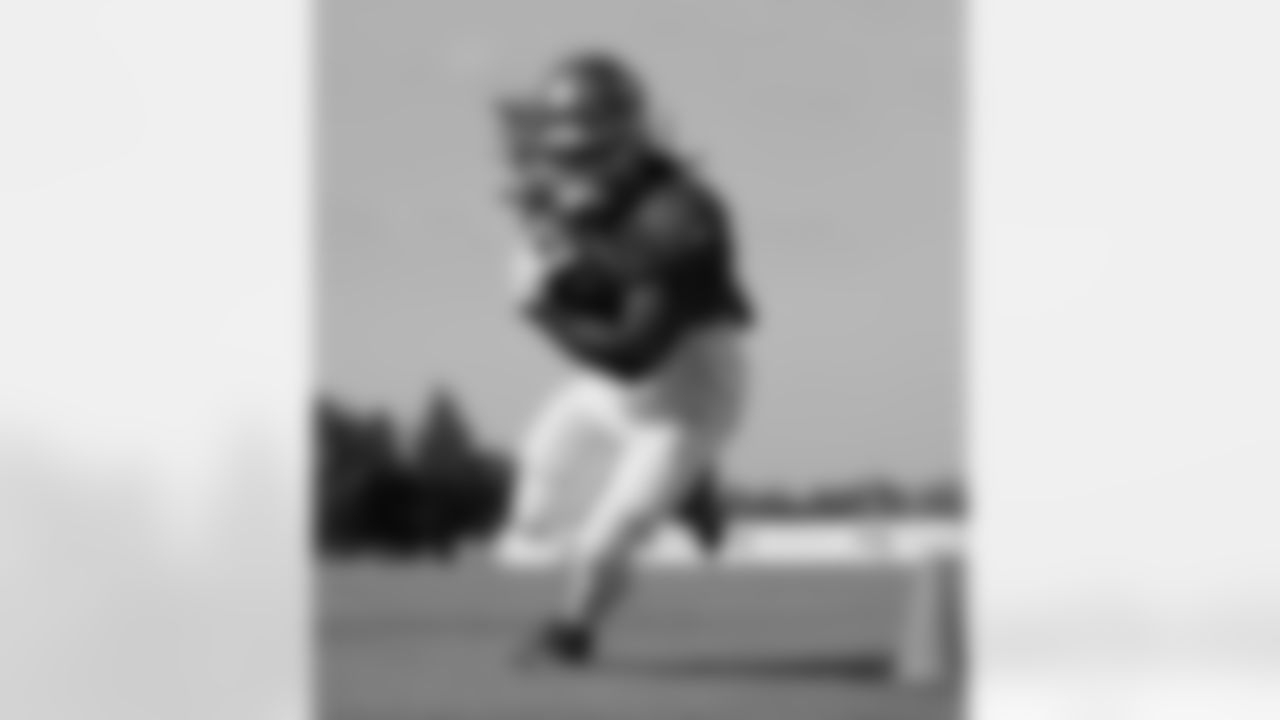
RB Jacquizz Rodgers


QB Ryan Fitzpatrick

QB Ryan Griffin
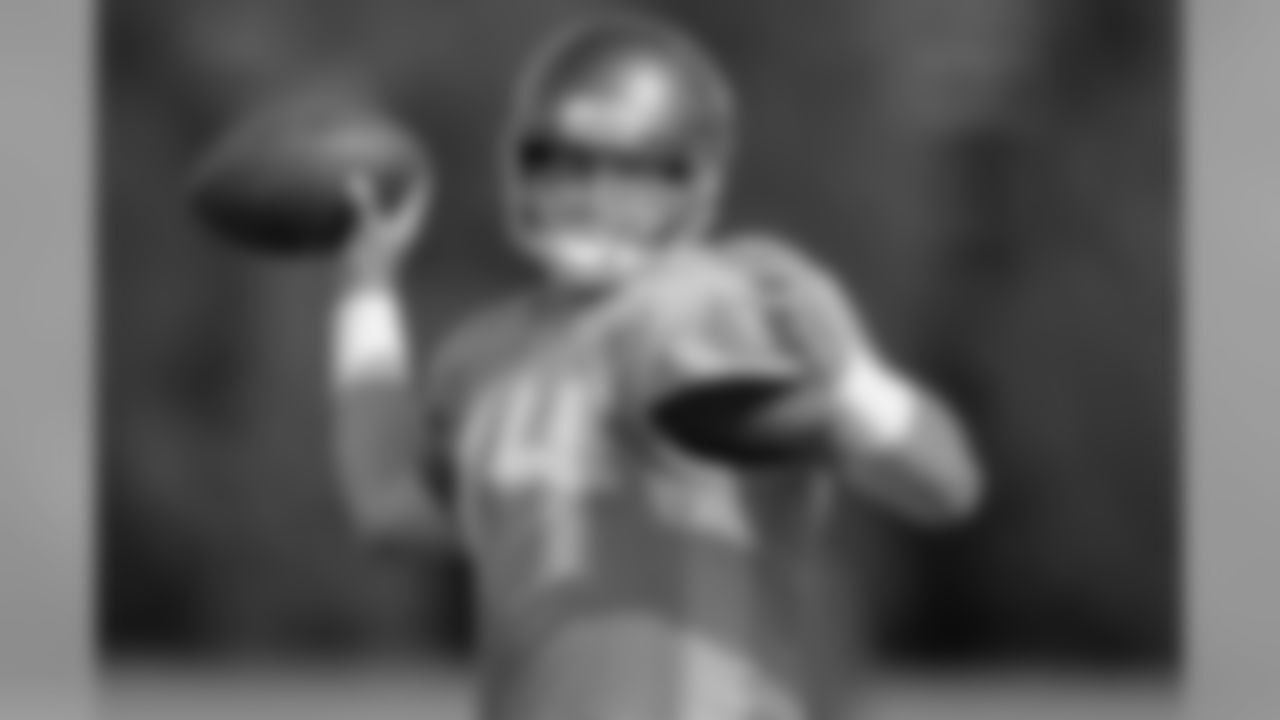
QB Ryan Fitzpatrick

TE O.J. Howard

S T.J. Ward

RB Peyton Barber and LB Lavonte David
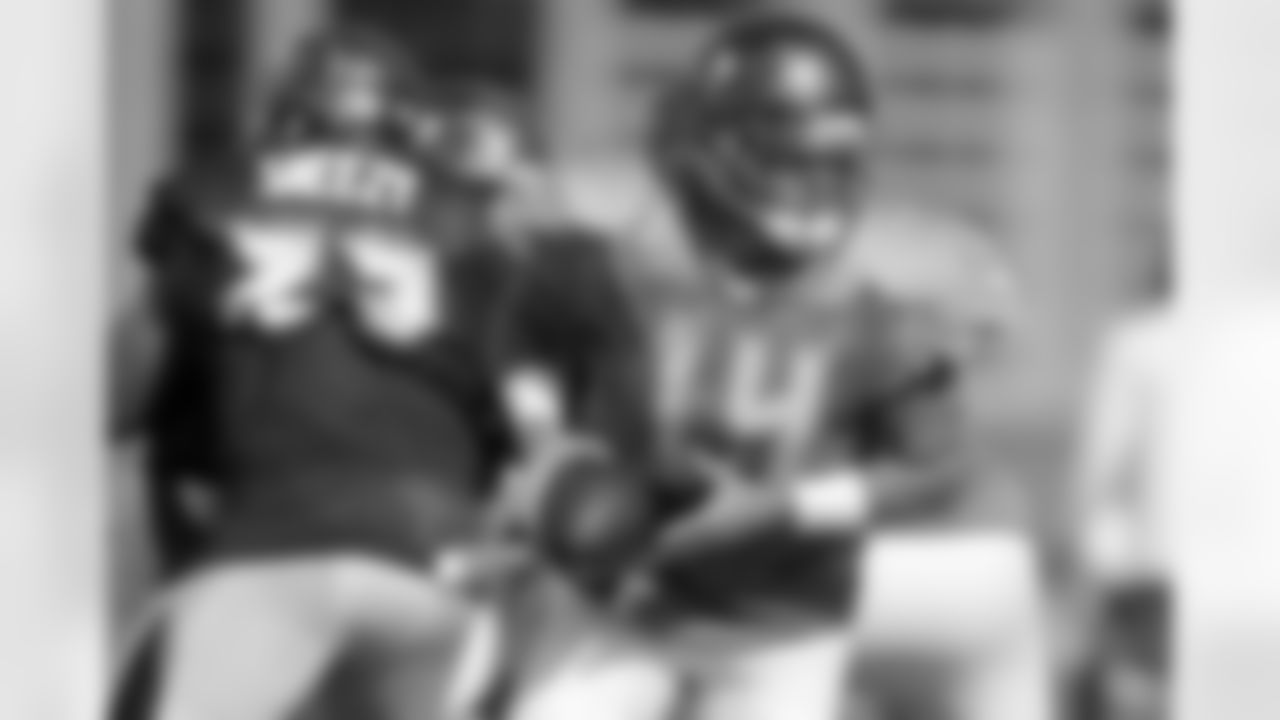
QB Ryan Fitzpatrick
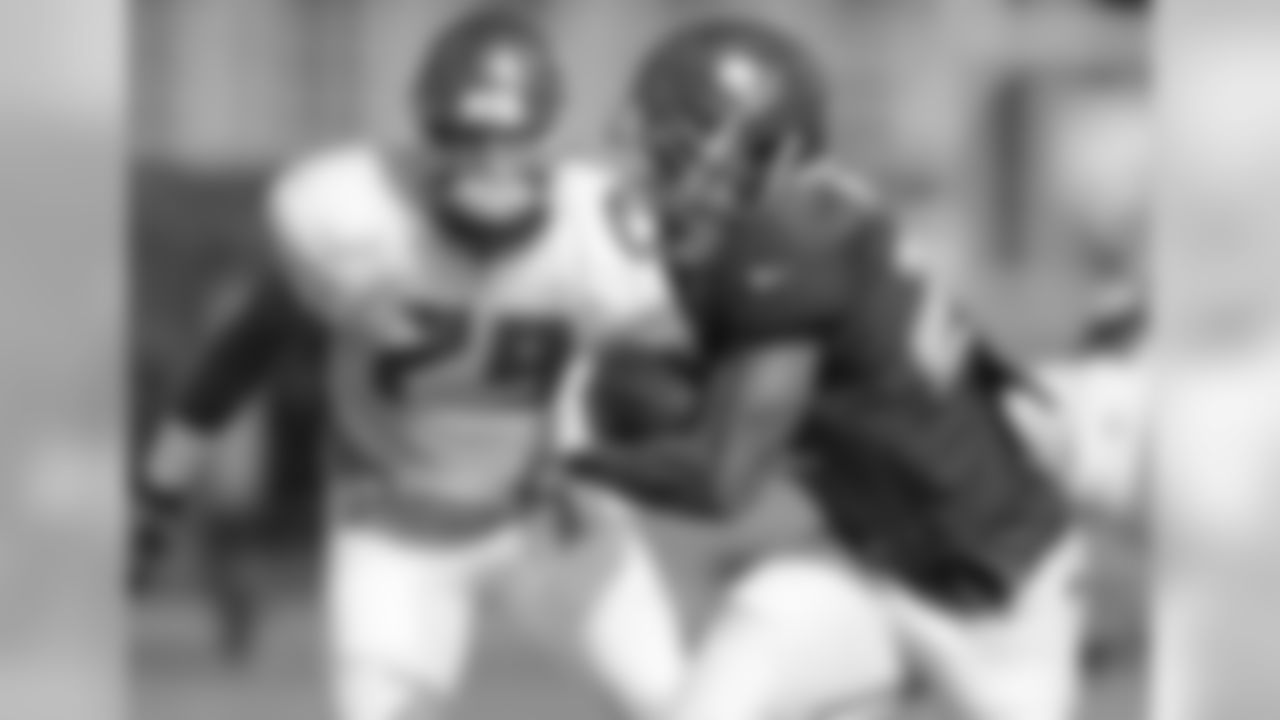
RB Doug Martin
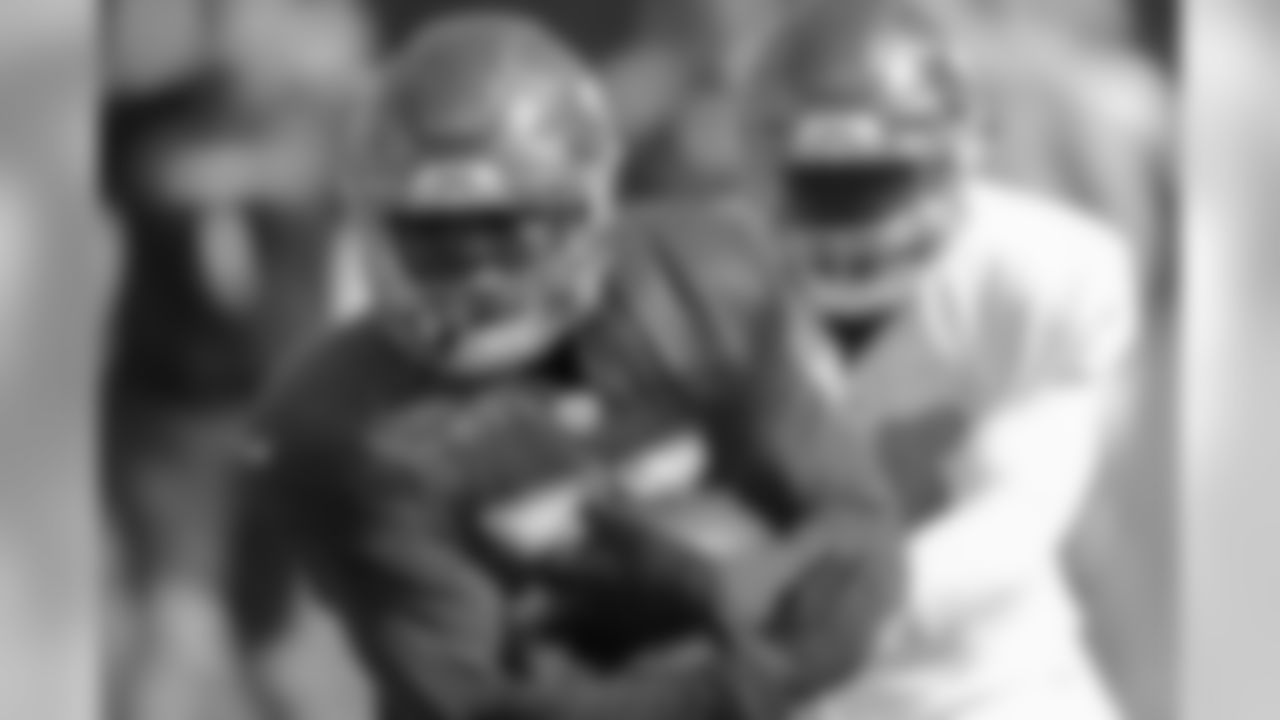
RB Peyton Barber

LB Cameron Lynch and TE Cameron Brate

RB Doug Martin
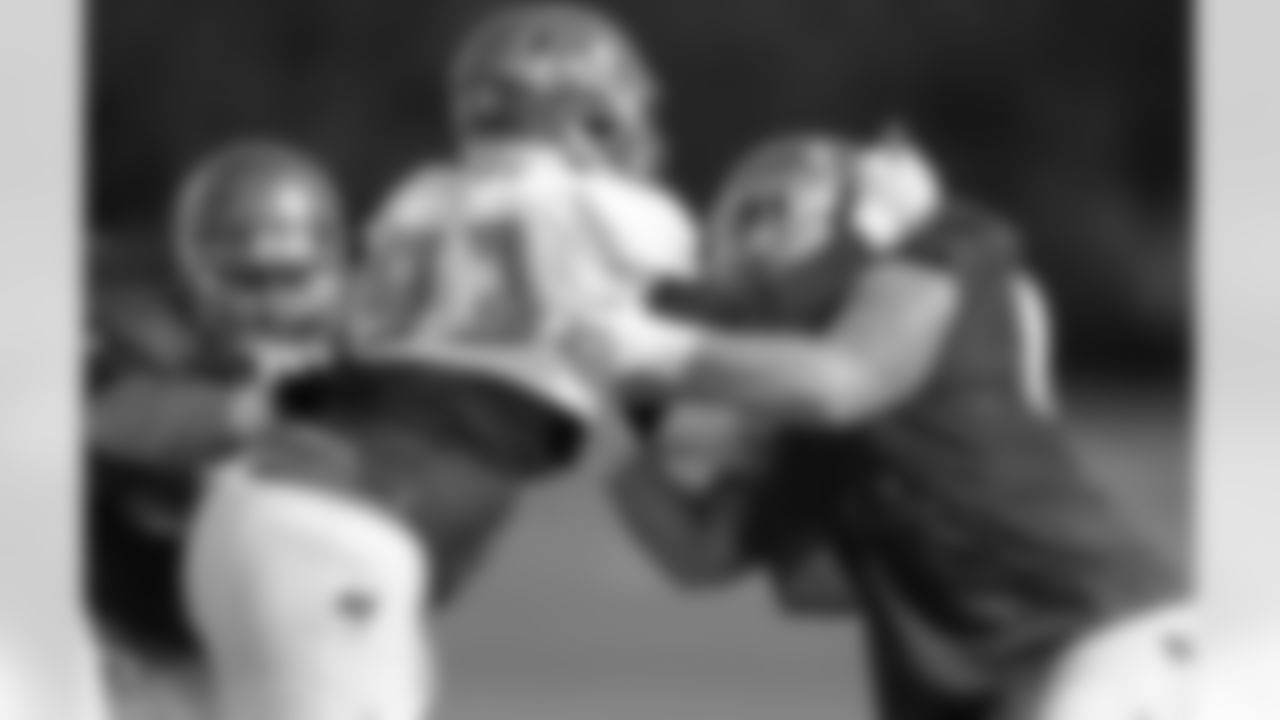
DT Gerald McCoy

LB Lavonte David

LB Kendell Beckwith

Bucs practice

RB Peyton Barber

Bucs helmet
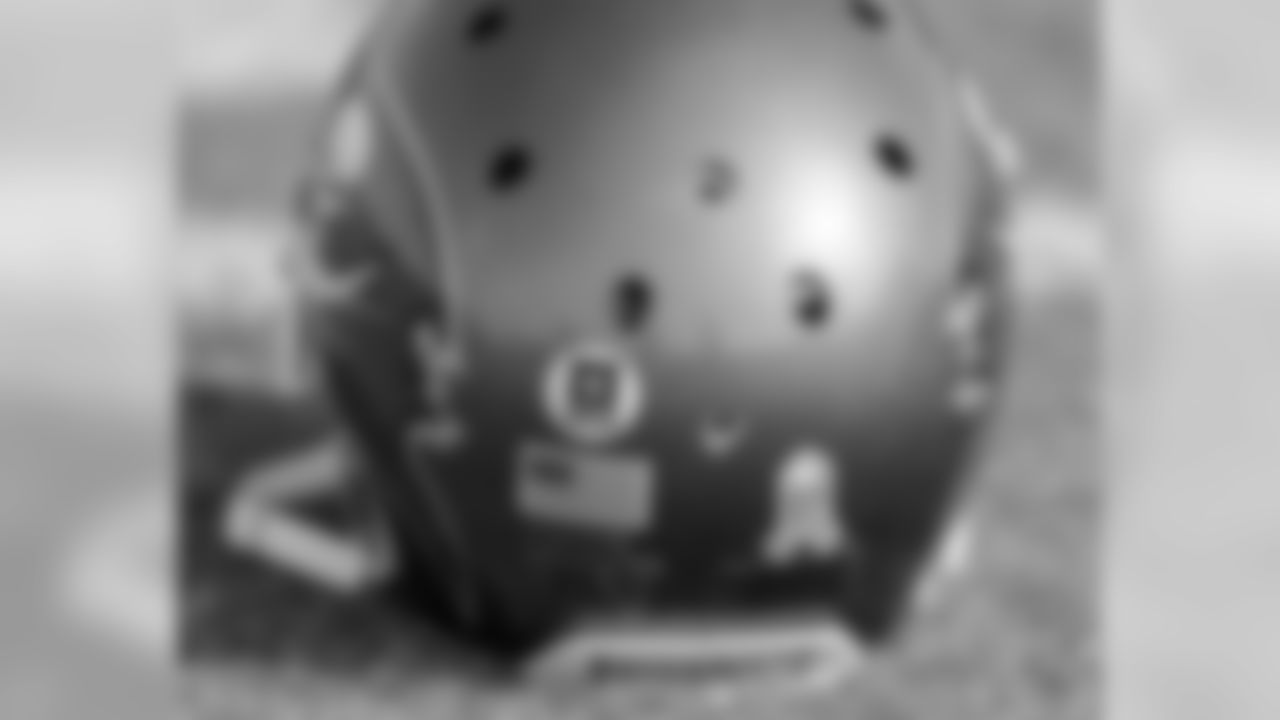
Bucs Salute to Service helmet
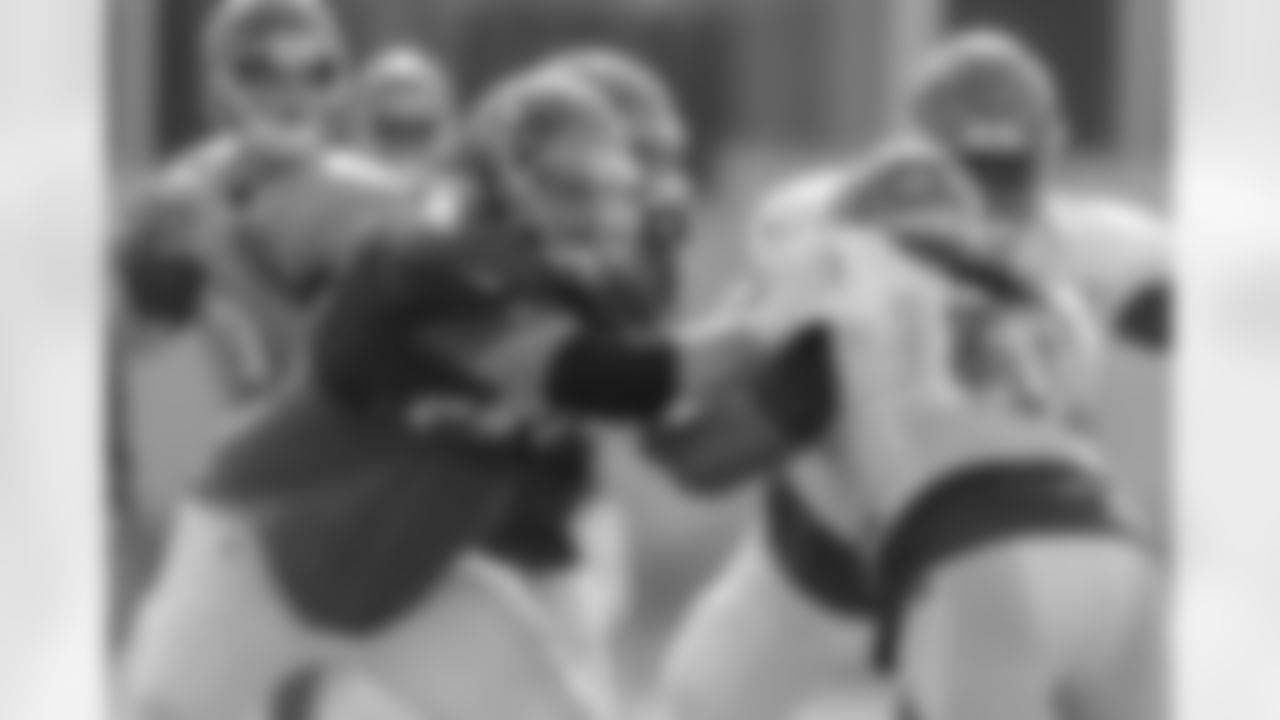
Bucs practice


LB Riley Bullough

LB Kwon Alexander and LB Lavonte David

TE Cameron Brate

CB Vernon Hargreaves
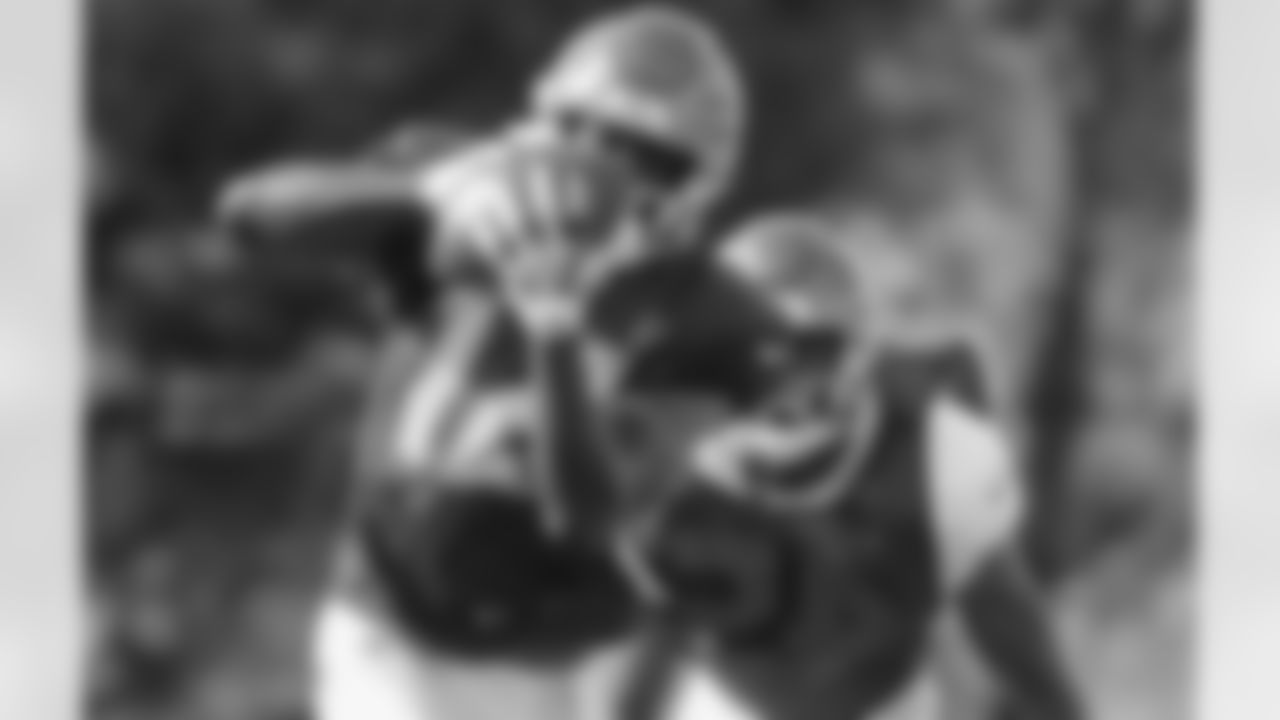
WR Chris Godwin

WR Chris Godwin

WR Chris Godwin

TE Alan Cross

RB Doug Martin
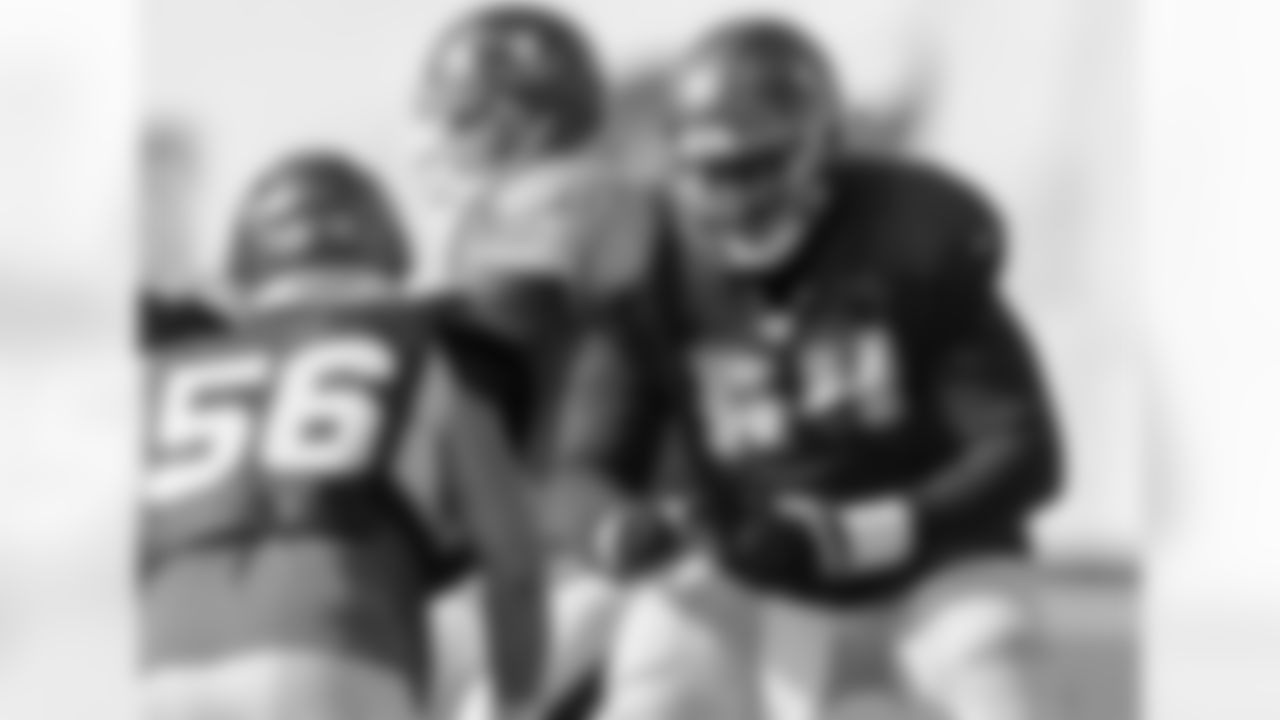
G/T Kevin Pamphile
The Jets are splitting time pretty evenly in the backfield between two veterans and one rookie. The vets are Matt Forte and Bilal Powell; Forte has caught the most passes among them with 29 and has been one of the league's best receiving RBs throughout his NFL career. Powell leads the team with 83 carries and 390 yards and has the best per-carry average among the three at 4.7. The rookie is Elijah McGuire, a sixth-round pick out of Louisiana-Lafayette who has four more carries than Forte, one of which was a 69-yard touchdown against Jacksonville.
Overall, the Jets are averaging a decent 4.1 yards per carry and have scored eight times on the ground. And they've been more than happy to lean on the rushing attack, handing off on 61.1% of all first-and-10 plays. That's the third-highest run percentage in the NFL. However, the ground game is lacking a bit in consistency, as the Jets have gained four or more yards on just 35.6% of their carries, the fifth-worst mark in the league.
One of the best things the New York offense has going for it is a turnover-happy Jets defense. The Jets have 16 total takeaways – nine interceptions and seven fumble recoveries – and that is tied for third-most in the NFL. More importantly, it has led to a lot of prime scoring opportunities for McCown and company. New York has already had 16 offensive possessions that began on the opponents' side of the 50, and that's the most in the entire NFL. As such, the average length of their scoring drives, in terms of snaps, is 6.67 plays, and that's the shortest average in the league. The Jets' offense has made the most of its defense's largesse, averaging 4.21 yards per play in the more compact area inside the 30-yard line, the second-highest average in the NFL.
The Jets have a new left tackle anchoring their line this year, as they brought in Kelvin Beachum from Jacksonville after splitting that spot between Ryan Clady and Ben Ijalana last year. Ijalana is still around but is now serving as a reserve. Wesley Johnson filled in for Mangold for eight starts last year and is now the full-time starter with the long-time Jet star moving on. The right tackle job now belongs to 2016 fifth-round pick Brandon Shell, though he has missed three games, including the last two, due to injury. The guards are the same as last year – James Carpenter on the left side and Brian Winters on the right – and Winters may be the team's most effective blocker. While the results in the ground game have been pretty good – 106.7 yards per game – McCown has absorbed quite a few sacks, as mentioned.
DEFENSE

The Jets' defense is coming off one of its best games so far, in which it helped produce a 34-21 over Buffalo with seven sacks, four forced fumbles and three fumble recoveries. New York's linebackers accounted for four of those seven sacks, with two for Jordan Jenkins and one each for Demario Davis and Darron Lee. Jenkins plays outside linebacker in the Jets' 3-4 and puts his hand on the ground in the nickel package; Davis and Lee have combined for 5.5 sacks this season despite being the middle linebackers in that 3-4 front.
Davis and Lee are also the Jets leading tacklers, with 95 and 72, respectively. Those two have by far the most stops in the running game, with 81 between them, but opposing offenses have run the ball fairly effectively. The Jets are allowing 121.0 rushing yards per game and 4.2 per carry. Steve McClendon, a 310-pound eighth-year veteran, anchors the Jets' three-man line at the nose and former first-round picks Muhammad Wilkerson and Leonard Williams flank him on either side, with Williams usually coming from the quarterback's blind side. Wilkerson had 12.0 sacks and went to the Pro Bowl in 2014 but has just 6.5 more in 24 games since. Williams has recorded just 0.5 sacks but does lead the team with 13 quarterback hits. Jenkins, who usually rushes from the side opposite Williams, has 11 quarterback hits. The Jets had just 11 sacks in their first eight games before terrorizing Tyrod Taylor last week.
As noted above, the Jets' strength on defense has been taking the ball away. Opposing teams have been able to move it, averaging 355.3 yards per game. Some of that has come on big plays, with the Jets ranking second-to-last with 40 gains of 20+ yards allowed, but eight of those came in the very first game of the season. The Jets are pretty close to league average when it comes to getting off the field on third down, but they need to make those third downs difficult to succeed regularly. If opponents can get their third downs in the 4-6 yard range, the Jets have allowed a 60.0% success rate on such plays, third-worst in the league. The Jets are 22nd in third downs of fewer than four yards, as well.
New York's secondary features two rookies starting together at safety in first-round pick Jamal Adams and second-round pick Marcus Maye. Adams is the one more likely to roam closer to the line of scrimmage while Maye more often covers the back end. Both players have started every game so far, with their roles reflected in their stats. Adams has two sacks while Maye is tied for the team lead with two interceptions.
The Jets cornerbacks, in contrast, arrived via unrestricted free agency, with former Brown Buster Skrine signing in 2015 and former Cowboy Morris Claiborne joining him this year. New York's pass defense ranks 19th in the league, giving up 234.3 yards per game, but is tied for seventh with nine interceptions.
Skrine and Claiborne have one each and nickel back Terrence Brooks has two, although one came on a fake punt against Miami. The issue for the Jets' corners has been penalties. Claiborne leads the NFL in defensive holding flags drawn and accepted (5 and 4, respectively) while Skrine has drawn three defensive holding penalties and also leads the league with two illegal contact calls.
Opposing teams have chosen to pass on first down against the Jets at a higher rate than average, probably because it has worked. The Jets have allowed quarterbacks to put up a combined 119.4 passer rating on first-down throws, worst in the NFL, which is quite a bit worse than their overall allowed rating of 91.2.
SPECIAL TEAMS

The Jets used a seventh-round pick in 2016 on punter Lachlan Edwards, an Australian who played collegiately at Sam Houston State, and haven't been disappointed. Edwards originally played Australian rules football in the Victorian Football League before coming to the U.S. to use his powerful leg in another sport. He is currently ranked seventh in the NFL in gross punting average (47.0) and 12th in net average (42.0). Edwards has also dropped 19 of his 47 punts inside the opponents' 20-yard line, versus just three touchbacks.
After moving on from Nick Folk, who was briefly the Buccaneers' kicker to start this season, the Jets signed former Arizona Cardinal Chandler Catanzaro to handle those duties this year. Catanzaro has made 15 of 19 field goal tries and all 20 of his PATs, and he's nailed both of his tries from beyond 50 yards. He has also been good on kickoffs, producing a touchback on 72.1% of his tries to rank 10th in the NFL. Thanks to that and good coverage units, the Jets rank fifth in the league with an average opponent kickoff drive start of the 23.8-yard line.
Kerley was handling most of the Jets' punt return duties before his suspension. The only player currently on the 53-man roster who has returned a punt this year is McGuire, who had one for 10 yards. Wide receiver ArDarius Stewart, a rookie third-round pick, has the most kickoff returns on the team, with nine, but is averaging just 19.2 yards per.





















